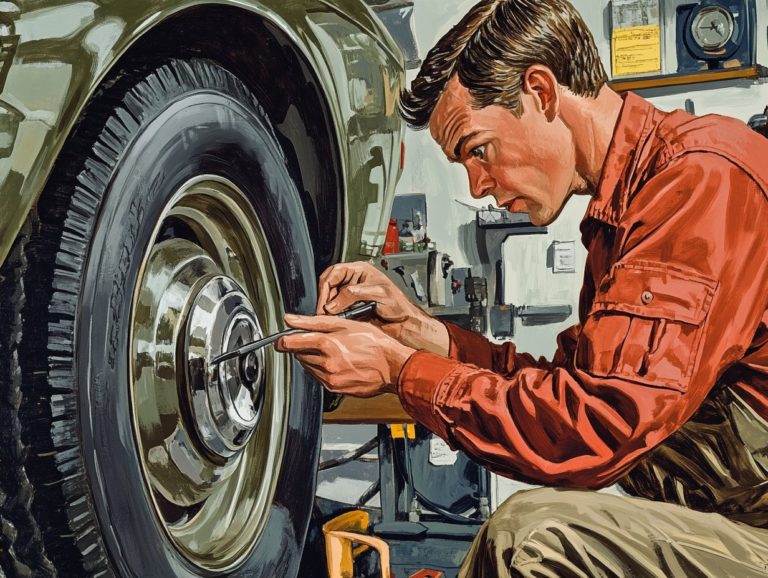How to Maintain Your Car’s Suspension System
A well-functioning suspension system is vital for your vehicle’s safety, comfort, and overall performance.
Prioritizing regular maintenance helps you sidestep costly repairs and enjoy a smoother ride. This article discusses maintenance importance, identifies common suspension issues, and offers straightforward DIY tasks to keep your system in excellent condition.
It also explains when to seek professional help and provides tips for selecting the right replacement parts. Get ready to transform your driving experience!
Contents
- Key Takeaways:
- The Importance of Suspension System Maintenance
- Signs of Suspension System Issues
- DIY Suspension System Maintenance
- Professional Suspension System Maintenance
- Replacing Suspension System Components
- Tips for Maintaining Your Suspension System
- Frequently Asked Questions
- 1. What is the purpose of maintaining your car’s suspension system?
- 2. How often should I have my car’s suspension system checked?
- 3. What are some signs of a failing suspension system?
- 4. Can I maintain my car’s suspension system on my own?
- 5. What components should be checked during suspension system maintenance?
- 6. How can I prolong the lifespan of my car’s suspension system?
Key Takeaways:
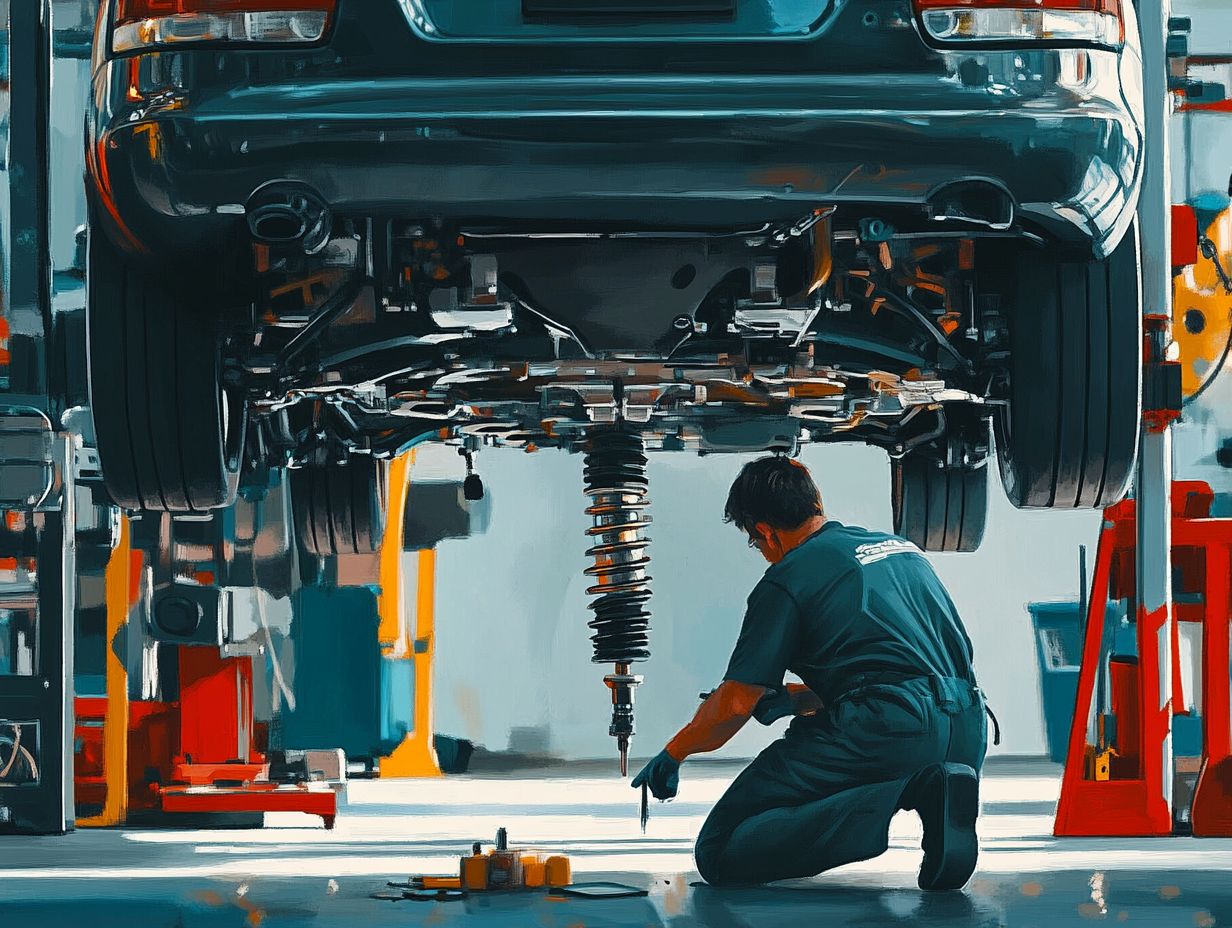
- Keep your car’s suspension system running smoothly with regular maintenance.
- Watch for signs of issues, like uneven tire wear and bouncing while driving.
- While some tasks can be done at home, get professional help for complex issues.
The Importance of Suspension System Maintenance
Your vehicle’s suspension system is key for optimal driving performance, ensuring ride comfort and safeguarding your safety on the road. Regular maintenance is essential for prolonging the lifespan of vital components like shocks, struts, and small rubber parts that cushion your vehicle’s suspension. These components heavily influence your vehicle’s handling and ride quality.
By prioritizing inspections and addressing repairs promptly, you can avoid serious issues and maintain your vehicle s performance, saving yourself from expensive repairs down the line.
Why Regular Maintenance is Necessary
Regular maintenance of your vehicle’s suspension system is crucial for safety and performance. Worn components can diminish handling and increase accident risks.
Parts like shocks, struts, and tires are essential for absorbing impact and maintaining traction. When these wear down, your ride quality suffers, and it can stress other systems, leading to more complications.
Routine inspections are critical for catching issues early. They provide a chance to fix minor problems before they escalate into costly repairs. By taking proactive measures, you can enhance comfort during your journeys and boost your vehicle’s longevity and safety.
Signs of Suspension System Issues
Recognizing signs of suspension system issues is crucial for your vehicle’s safety and your driving comfort. Common symptoms include a bumpy ride, uneven tire wear, or difficulty steering. Being vigilant about these indicators can help you address potential problems before they worsen.
Identifying Common Problems
Common suspension system issues often stem from worn shocks and struts, damaged bushings, or steering linkage complications. These problems can significantly impact your driving comfort and safety.
To identify these issues, conduct a visual inspection of the components for signs of wear or damage. Look for leaks in the shocks or cracks in the bushings. If you notice a decline in ride quality, such as excessive bouncing or swaying around corners, something isn’t right. Poor steering response or uneven tire wear usually indicates complications within the suspension setup.
Each component plays a vital role: shocks and struts absorb road imperfections, while damaged bushings increase vibrations. By prioritizing the health of these parts, you ensure a smoother ride and enhance your vehicle’s overall performance, making your driving experience safer and more enjoyable.
DIY Suspension System Maintenance
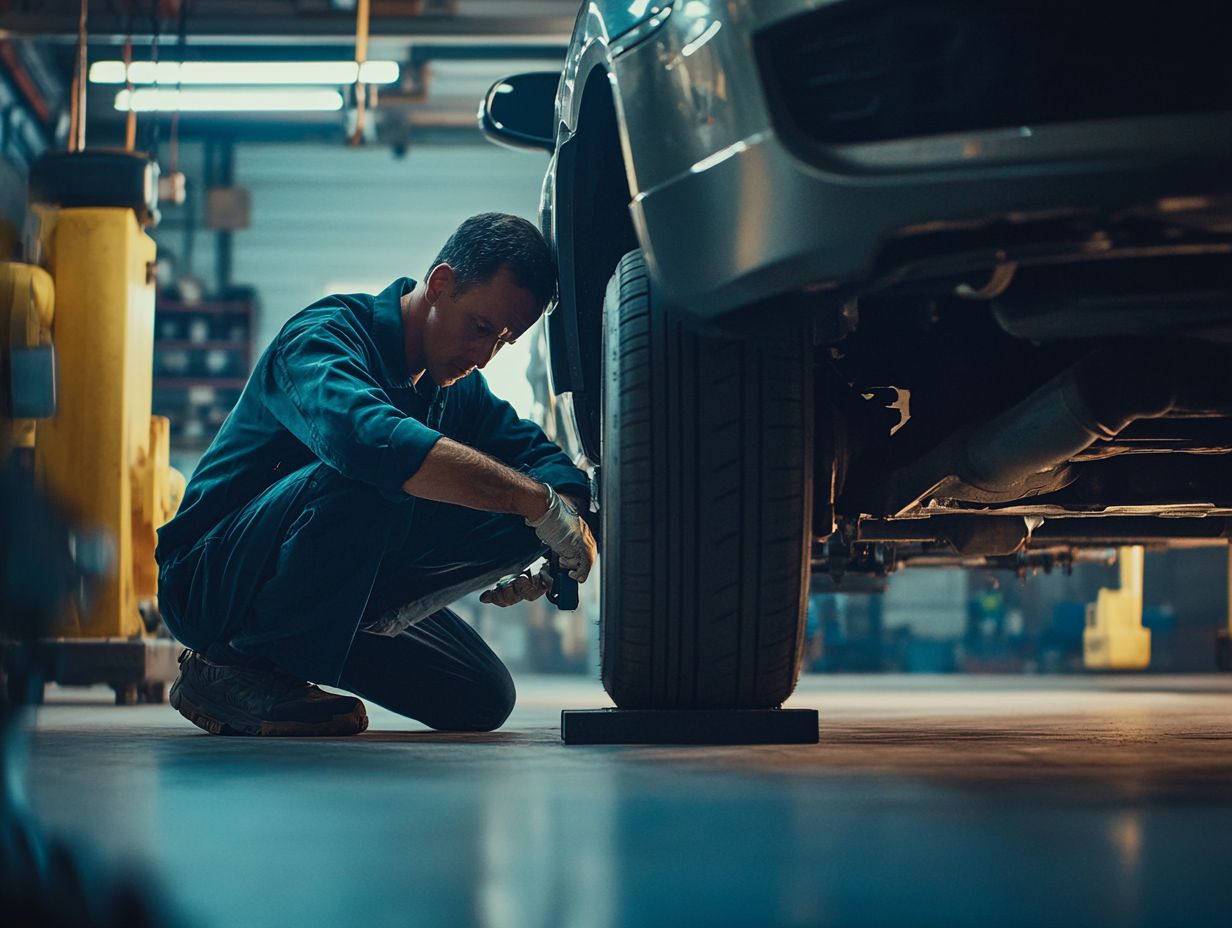
Engaging in DIY maintenance on your suspension system can be rewarding and cost-effective. This approach allows you to conduct thorough inspections, monitor tire pressure, and replace worn components as necessary, ensuring your vehicle remains in top-notch condition.
Start your DIY journey now by implementing these maintenance tips or consult a professional to keep your suspension system in excellent shape!
Simple Tasks to Keep Your Suspension System in Good Condition
Maintaining your suspension system is straightforward and involves essential tasks like regularly checking tire pressure and inspecting shocks and struts. For a more detailed approach, you can follow this guide on how to maintain your car’s suspension system.
Cleaning components is also important to prevent dirt buildup. Periodically rotating your tires can make a significant difference in wear and lifespan of both your tires and suspension components.
Check and replace worn bushings and mounts to enhance stability while driving. Tightening any loose parts can dramatically reduce noise and vibrations, contributing to a smoother ride.
Regular alignment assessments are essential for maintaining proper vehicle tracking. This not only promotes your comfort but also maximizes fuel efficiency.
These maintenance tasks are vital for elevating your vehicle’s overall performance and drivability.
Professional Suspension System Maintenance
When it comes to suspension system maintenance, seeking professional help is crucial, especially for issues beyond your DIY skills.
Experienced mechanics can conduct thorough inspections and perform necessary repairs. This ensures both safety and optimal performance for your vehicle.
When to Seek Professional Help
Don t wait! If you notice significant handling issues or hear unusual noises, seek professional help immediately. A marked decline in ride comfort that DIY methods can t fix is another sign.
Persistent clunking sounds while navigating bumps or struggling to steer indicate deeper problems. If your vehicle leans excessively during turns or shows uneven tire tread wear, these are clear signs requiring expert attention.
Mechanics have the specialized tools and experience to diagnose these concerns accurately. Addressing issues promptly is essential, as delays could lead to severe safety risks on the road and potentially costly repairs.
Replacing Suspension System Components
Replacing suspension system components like struts and shocks is essential for maintaining your vehicle’s performance. This ensures a smooth, comfortable ride.
Over time, these parts wear down. Timely replacement is crucial for an optimal driving experience.
When to Replace Parts and How to Choose the Right Ones
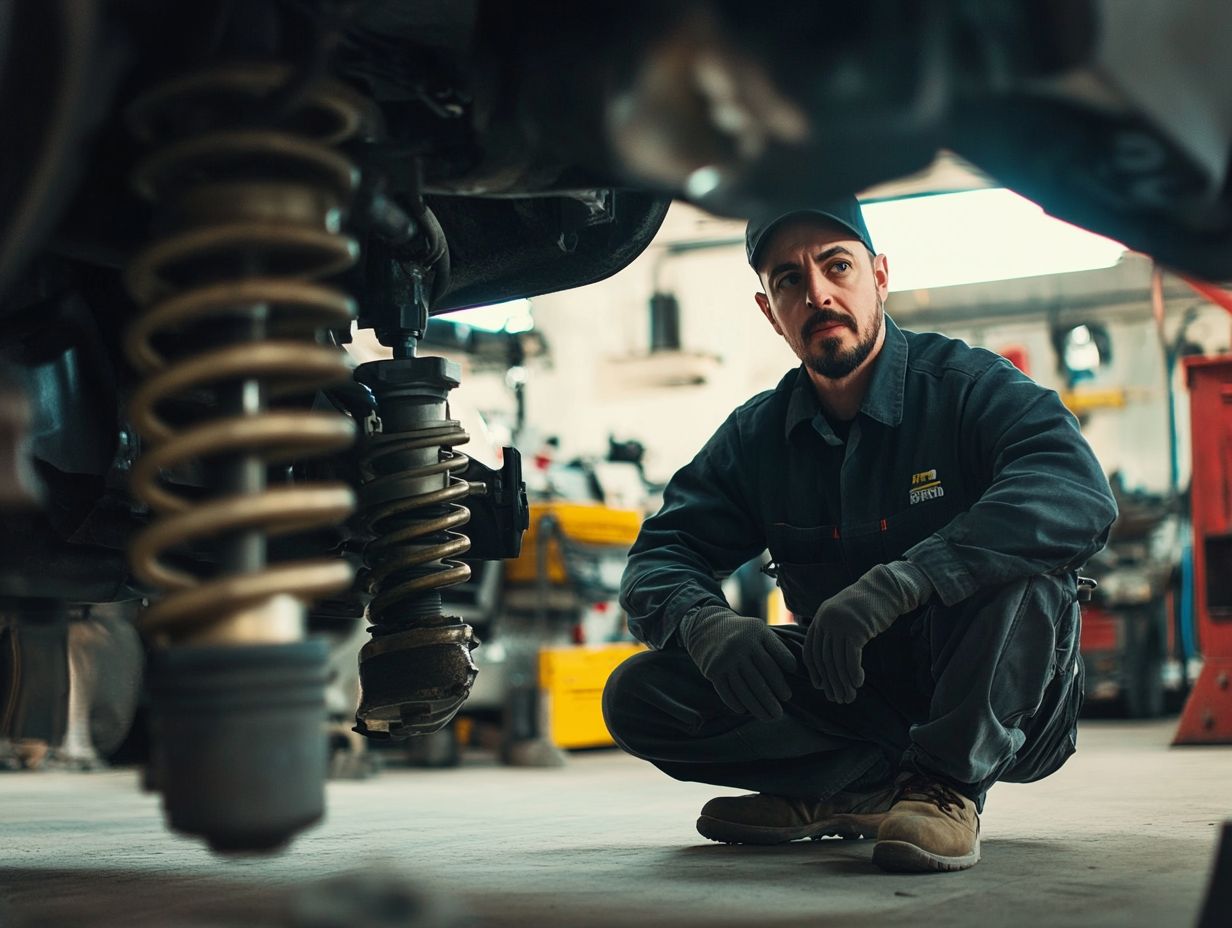
Knowing when to replace parts in your suspension system is crucial for both safety and performance. Factors like wear, age, and driving conditions significantly influence this decision.
Regular inspections help identify potential issues before they escalate. Look for signs like uneven tire wear, a bumpy ride, or mysterious noises while driving these indicate it s time to consider new components.
When selecting parts, prioritize quality. Choose reputable brands that offer durable materials. Ensure compatibility with your vehicle’s make and model to prevent further damage.
Consulting with a professional mechanic is advisable. They can provide tailored recommendations to enhance ride quality and bolster overall safety.
Tips for Maintaining Your Suspension System
To guarantee the longevity and optimal performance of your suspension system, adopt effective maintenance strategies.
Regular inspections, vigilant tire pressure checks, and prompt attention to any signs of wear are essential practices. By doing so, you ensure that your vehicle remains in peak condition and ready for any journey ahead.
Best Practices for Long-Term Maintenance
Implementing best practices for the long-term care of your suspension system involves regular inspections, maintaining correct tire pressure, and promptly addressing any driving discomfort you experience.
These routine checks are important for enhancing your vehicle s performance and ensuring your overall safety on the road. Schedule periodic assessments to catch damage before it escalates into costly repairs. Proper tire pressure directly impacts suspension response, leading to improved handling and a more comfortable driving experience.
Staying proactive with your maintenance can significantly extend the lifespan of your suspension components, reduce unexpected breakdowns, and provide a smoother, safer driving experience for you and your passengers.
Frequently Asked Questions
Here are some common questions about maintaining your car’s suspension system.
1. What is the purpose of maintaining your car’s suspension system?
Maintaining your car’s suspension system is crucial for safety and overall vehicle performance. The suspension system helps absorb shocks and bumps, providing a smooth ride while also playing a critical role in steering and handling, ensuring your car stays in control.
2. How often should I have my car’s suspension system checked?
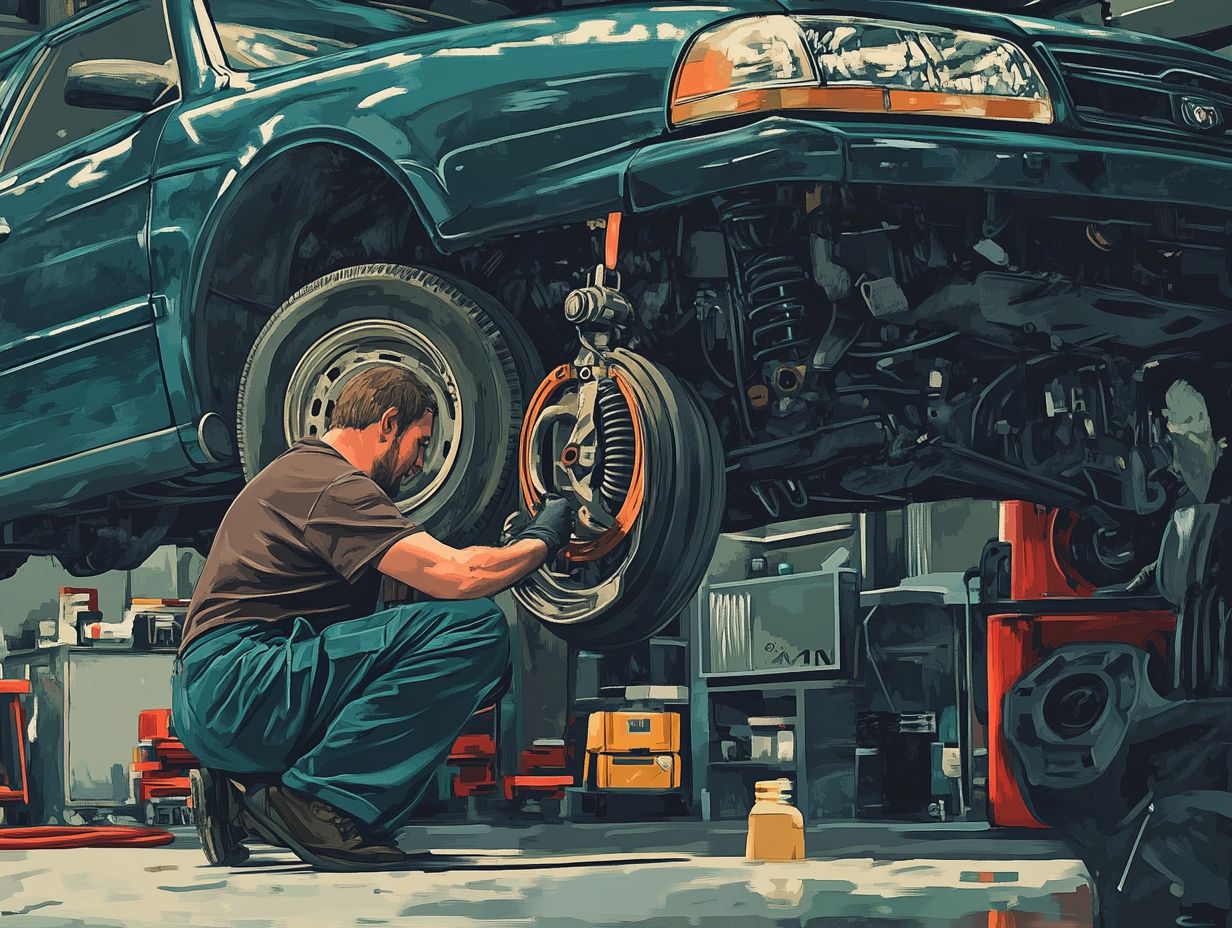
It is recommended to have your car’s suspension system checked at least once a year or every 12,000 miles. If you frequently drive on rough roads or notice signs of damage, it’s best to have it checked more often.
3. What are some signs of a failing suspension system?
Common signs of a failing suspension system include uneven tire wear, excessive bouncing or swaying while driving, difficulty steering, and a bumpy or uncomfortable ride. If you notice any of these issues, have your suspension system checked as soon as possible.
4. Can I maintain my car’s suspension system on my own?
While maintaining your car’s suspension system can be complex, you can perform regular visual inspections to check that all components are clean and free of damage or debris. If you find any issues, take your car to a mechanic for proper maintenance.
5. What components should be checked during suspension system maintenance?
During suspension system maintenance, a mechanic will typically check the shocks, struts, springs, and other related components. They will also inspect suspension bushings and joints for any signs of damage. It’s essential to have all these components checked for the proper functioning of your suspension system.
6. How can I prolong the lifespan of my car’s suspension system?
To prolong the lifespan of your suspension system, practice good driving habits and avoid rough roads whenever possible. Regular inspections, following the manufacturer’s maintenance schedule, and promptly replacing any damaged parts are crucial. Keeping your tires properly inflated reduces strain on your suspension.
Don t wait! Check your suspension system today for a smoother ride.


